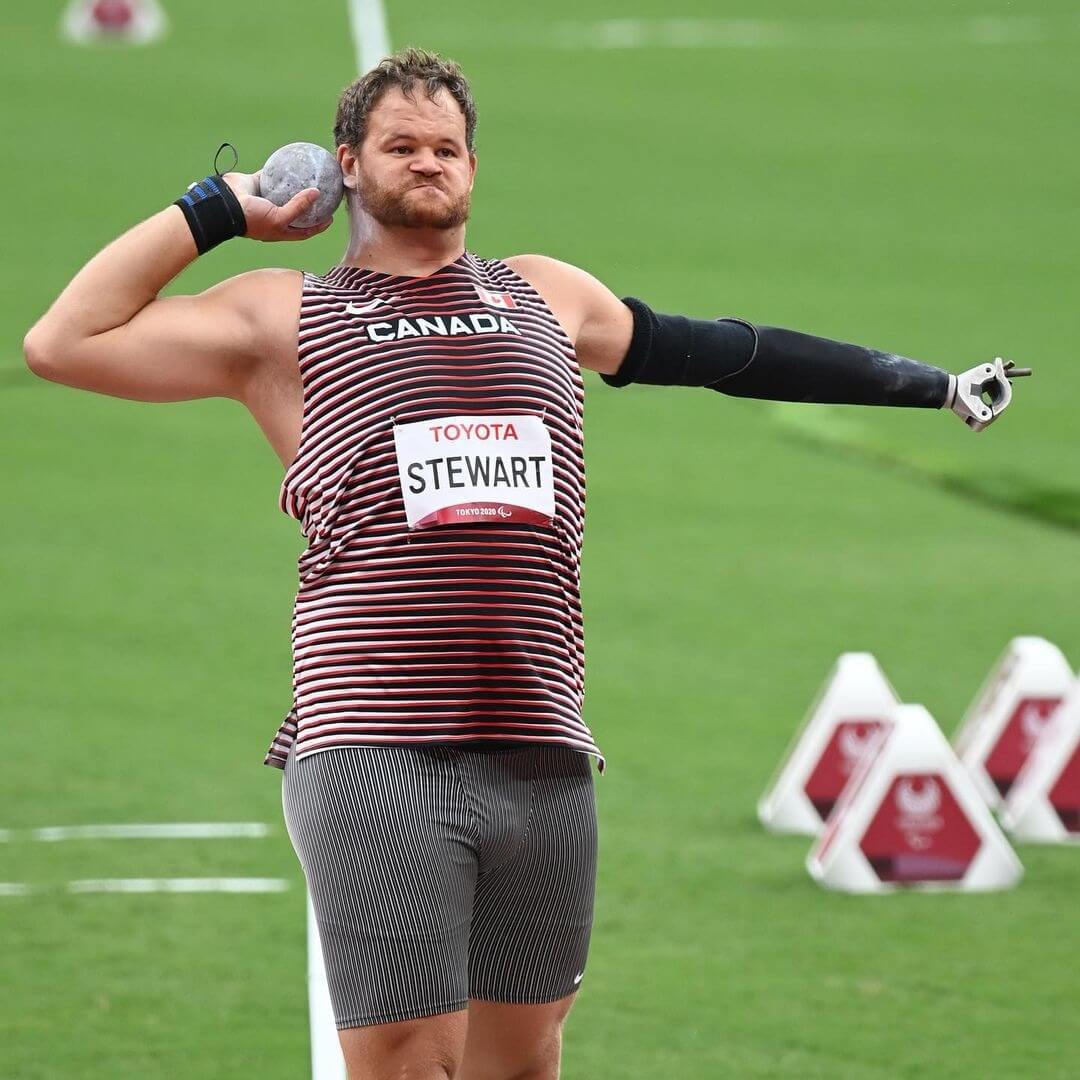Carding money, delivered through the Athlete Assistance Program, is some of the only consistent funding Canadian elite para-athletes receive. In 2024, it provides $1,765 per month as a living and training allowance to athletes at the international competition level. And although Olympians earn $20,000 for a gold medal, $15,000 for a silver medal and $10,000 for a bronze medal through funding from the Canadian Olympic Committee, Canadian Paralympians have never before been paid for reaching the podium.
The money landscape is starting to change for athletes, however. Starting with Paris 2024, Canadian Paralympic medallists will receive the same amount of money as their Olympic counterparts. Sponsors like Toyota and Air Canada have also put significant resources into sponsorships for athletes and their programs, and athletes are continuing to advocate for more money. So, what is the financial reality of athletes who represent our country?

Gold medal–winning shot putter Greg Stewart spoke to MoneySense about the fraught financial environment for para-athletes and his own approach to money. At 38, he’s in his second go-round when it comes to Paralympic competition, having won gold in shot put at the 2020 Paralympics in Tokyo. He was previously on Canada’s sitting volleyball team—a natural fit when you’re seven-foot-two—winning bronze medals at the 2007 and 2011 Parapan American Games. He previously won three world titles with the men’s para standing volleyball team.
Stewart retired from professional sport in 2022, but he returned in 2024. He won silver at the World Para Athletics Championships in May, solidifying his selection for Paris 2024. Stewart recently co-wrote a book, Stand Out: The True Story of Paralympic Gold Medallist Greg Stewart (Kermode Education, 2024), and he will compete at the Summer Games in Paris on Sept. 4. As you’ll see in this interview, the financial realities of competing are something he thinks about a lot. (Interview has been condensed and lightly edited.)
Tell me about your approach to money as a Paralympian?
My approach has slowly been changing, now that society is starting to view disabled people [better], to see us as equals. I think we’re starting to see that reflected in how Paralympic or disabled athletes are treated. But at the same time, there are still a lot of costs to [being a professional para-athlete]. People with disabilities are still underfunded in terms of the costs of equipment, supporting themselves, and their basic needs. If you’re a carded athlete, that might—might—help pay for a little bit of your rent. But it’s not going anywhere toward supporting your disability.
Did finances play a role in your decision to retire in 2022?

I chose to retire for two reasons. I wanted to spend more time on the things that mattered to me—and that was my partner and my income. Carding is not enough money to pay for your rent and food, let alone any other activities that you have. So, retirement gave me the opportunity to start to earn a living, and to create more of a resume, in terms of actually hunkering down and earning a paycheque. Realistically, though, the majority of athletes are focused on trying to get carded, period, because they believe that’s going to be a source of income they can rely on. [They think they won’t] have to worry about maybe picking up that extra shift as an athlete.
What were some of those jobs that you did?
I used to work for my prosthetist. And I used to work in the recycling industry, in automotive scrap. I did that for three years while I was competing. It helped pay for a lot of things during COVID. But it would require me to step away from training for a week or week-and-a-half every time. The problem I have is that we are talking about athletes, we’re talking about people that are putting themselves out there to represent Canada. The best way I could say it is: we are ambassadors for the country. Yet, we are in a 15-minutes-of-fame society in Canada. There’s no longevity to [sport in this country]. And if there is, you as an athlete have to make that longevity.
What impact do you see the increase in corporate investment having on Canadian para-sport athletes?
I think it’s going to create a little bit more competition within para sport, because it’s challenging sometimes to find competitors, depending on the event. When you show money, people’s ears perk up. They start to realize, OK, there’s more to this than just passion. At the same time, I also think that putting money up front will potentially create a little bit of greed, a little bit of corruption. That’s what money does to everybody. As long as we can be mindful around that, then I think really good things could happen.

